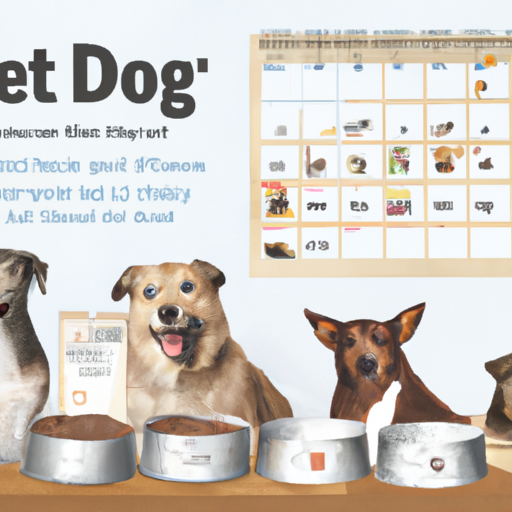As a caregiver to your furry friend, you might find yourself wondering about the best dietary choices for them. One question that frequently pops up is: “how often should dogs have wet food?” To help answer this, we’ll delve into several key areas.
Understanding Your Dog’s Nutritional Needs
First, it’s important to grasp the basics of canine nutrition. Like humans, dogs require a balanced diet that includes proteins, carbohydrates, fats, vitamins, and minerals. However, the proportions of these nutrients and the form they come in can significantly differ from our own dietary needs.
For instance, dogs are primarily carnivorous, though not strictly so. They require a higher proportion of proteins and fats, which can be found in both dry and wet food.
Here’s a simple breakdown of the general nutritional requirements for dogs:
| Nutrient | Adult Dogs | Puppies |
|---|---|---|
| Proteins | 18% | 22% |
| Fats | 5% | 8% |
The Pros and Cons of Wet Food
Before deciding on how often dogs should have wet food, let’s explore its benefits and drawbacks.
Benefits
- Hydration: Wet food is about 75% water. This can contribute to keeping your dog hydrated, especially if they’re not keen on drinking water.
- Palatability: Many dogs find wet food more appealing than dry food, making it a good option for picky eaters.
- Easier to Chew: Wet food is easier to chew and swallow, particularly for puppies, senior dogs, or dogs with dental issues.
Drawbacks
- Shorter Shelf Life: Once opened, wet food doesn’t last long and needs to be used within a couple of hours.
- More Expensive: Generally, wet food is more pricey than dry food.
- Dental Health: Wet food can contribute to plaque and tartar build-up, leading to dental problems.
Scheduling Wet Food in Your Dog’s Diet
Now that you understand the pros and cons of wet food, how often should it be incorporated into your dog’s diet? It depends on several factors, including your dog’s age, breed, health status, and personal preferences.
For instance, puppies may benefit from wet food because it’s easier to chew. Older dogs with dental problems may also find wet food more comfortable to eat. Meanwhile, if your dog has a risk of obesity, you might want to limit wet food due to its higher fat content.
Mixing Wet and Dry Food
Many caregivers find that a mix of wet and dry food works best for their dogs. This approach can offer the benefits of both types of food, balancing out their drawbacks. A common ratio is 50% dry food and 50% wet food, but you can adjust this according to your dog’s needs and preferences.
FAQs
Q: Can I feed my dog only wet food?
A: Yes, as long as it’s a balanced and complete diet. However, consider the potential dental health issues associated with this choice.
Q: How much wet food should I feed my dog?
A: This depends on your dog’s weight, age, and activity level. Generally, you can follow the guidelines provided by the wet food manufacturer.
Q: Is wet food suitable for all breeds?
A: Yes, but the amount and frequency may need to be adjusted based on the breed’s size and energy levels.
Q: Can wet food cause diarrhea in dogs?
A: Sudden changes in diet can cause digestive issues, including diarrhea. It’s best to introduce new foods gradually.
Remember, every dog is unique, and what works for one might not work for another. When in doubt, it’s always best to consult with your vet about your dog’s dietary needs.



